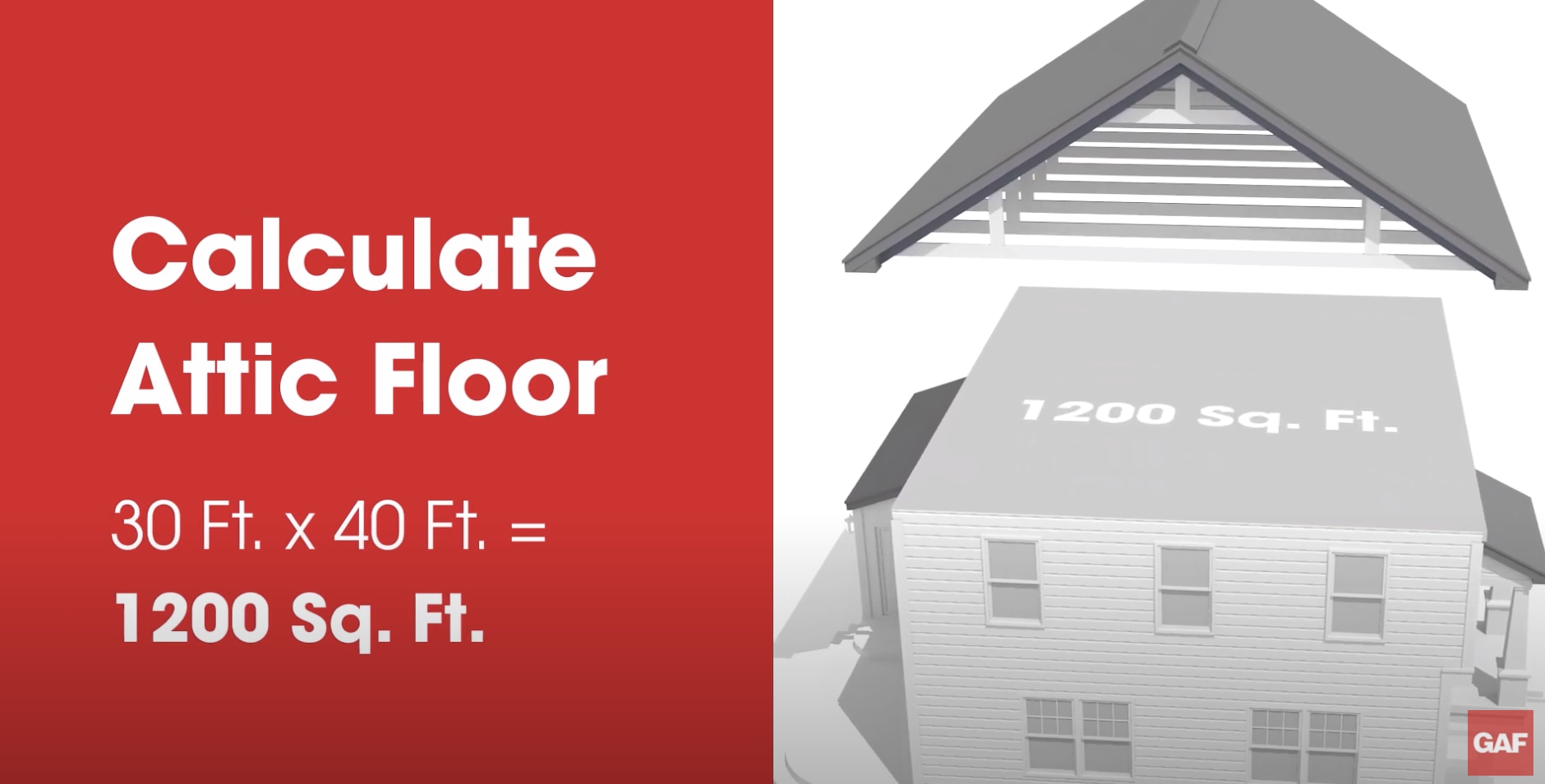When considering replacing your roof, you'll need to calculate the amount of attic ventilation needed to help reduce excess heat and moisture in your attic. Excess heat and moisture can lead to premature roof system degradation and damaging ice dams in the winter.
Let's take a closer look at the process of calculating how much attic ventilation you'll need to to properly ventilate the attic space.
What Is the Balanced Ventilation Rule?
The balanced ventilation rule states that the amount of air coming in from the intake vents at or near the soffit area of the roof should always match that of the exhaust vents at or near the ridge of the roof. This ensures that a balanced amount of air enters and exits the attic space.
Any imbalance of intake and exhaust—such as having more exhaust than intake—can make the system less effective by reducing the amount of warm, moist air that escapes the exhaust vents. A proper amount of intake ventilation will help the exhaust ventilation function more efficiently.
Care must always be taken to avoid mixing different types of exhaust vent products. Using different types on the same attic space can also cause an imbalanced system.
How to Calculate a Balanced Attic Ventilation System
The most effective attic ventilation system is a balanced one, with equal amounts of air coming in and going out. This continuous, balanced flow of air helps to reduce overheating and moisture build-up, which can result in ice damming and damage to your roofing system.
1. Measure Attic Floor Space

Start by measuring the square footage of attic floor space. For example, if the attic is 30 ft. wide and 40 ft. long, multiplying those numbers together would reveal a total square footage of 1,200 sq. ft.
2. Calculate the Net Free Ventilation Area
Calculating the Net Free Ventilation Area (NFVA) uses the 1:300 rule. Let's dig a bit deeper:
What Are NFVA Ratings?
NFVA is a measure of open area in a roof vent that allows for air to move through it. Also called Net Free Ventilation (NFV) or Net Free Area (NFA), this rating is used to determine how much airflow is needed for the total attic space, as well as how much is needed for intake and exhaust. The types and quantity of roof vents are calculated based on this measurement.
What Is the 1:300 Rule?
The US Federal Housing Authority recommends a minimum of 1 square foot of attic ventilation for every 300 square feet of attic floor space, evenly split between intake and exhaust.
The NFVA is calculated by dividing the total attic square footage by 300, the minimum recommendation for a balanced ventilation system, or the number stipulated by local codes. In our example, we divide 1,200 by 300 to get 4 sq. ft. NFVA needed for attic space.
Most roof ventilation products come with a NFVA rating in square inches, not square feet. To convert the NFVA for the attic space into square inches, multiply it by 144, the number of inches in a square foot. In our example, 4 times 144 equals 576 sq. in. NFVA.
A balanced ventilation system requires equal intake and exhaust. To find out how much ventilation is needed for each side of the system, simply divide the NFVA in square inches in half. In our example, we divide 576 in half and get 288 sq. in. NFVA needed at both the intake (at the soffits) and exhaust (at the ridge).

3. Select the Right Intake and Exhaust Ventilation Products
The next step is to select the correct ventilation products for your attic. The GAF attic ventilation calculator can tell you the types and quantities of vents that you'll need for your roof based on your attic dimensions.
You can also visit the GAF ventilation and attic vents product page to help you select the intake and exhaust vents for your roof. It's important to consult with a local roofing contractor for advice on the best products for your specific property and house.
4. How to Place Intake and Exhaust Ventilation
Intake ventilation is installed at the lowest part of the attic space, generally at the soffit or base of the roof. Exhaust ventilation is installed at the highest part of the attic space, which is typically at the ridge or apex of the roof.
Homeowners should always discuss the placement of their intake and exhaust vents with a professional.
How Do You Size a Power Attic Vent?
If you're looking to utilize a powered attic vent to help reduce heat and moisture from your attic space, it's important to remember that it should never be mixed with ridge vents or other types of non-powered exhaust vents. Typically, powered attic vents are rated by the amount of square footage they can ventilate. By calculating your total attic floor square footage, you can then figure out the number powered attic vents needed to properly ventilate your attic space.
For more information about calculating and planning a balanced ventilation system for your attic, consult with a contractor certified by GAF*.
*Contractors enrolled in GAF certification programs are not employees or agents of GAF, and GAF does not control or otherwise supervise these independent businesses. Contractors may have agreed that they will use GAF roofing products, and may receive benefits, such as loyalty rewards points and discounts on marketing tools from GAF for participating in the program.

